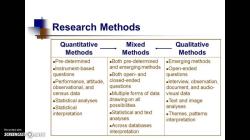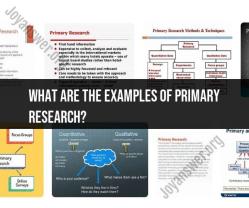What should be included in a qualitative research paper?
A qualitative research paper typically follows a specific structure, similar to other types of research papers, but with a focus on qualitative research methods and findings. Below is a comprehensive guide on what should be included in a qualitative research paper:
Title: Provide a clear and concise title that reflects the research topic and the qualitative nature of the study.
Abstract: Write a brief summary (usually around 150-250 words) that outlines the research problem, methodology, key findings, and implications. This should give readers a quick overview of your study.
Introduction:
- Research Background: Provide context by discussing the background of the research problem, highlighting the gap in existing literature, and explaining the need for the study.
- Research Questions or Objectives: State the research questions or objectives that guide your study.
- Rationale: Explain why qualitative research methods are suitable for addressing your research questions.
Literature Review:
- Summarize relevant literature and theoretical frameworks that inform your research.
- Show how your study contributes to or extends existing knowledge in the field.
Methodology:
- Research Design: Describe the qualitative research design you used (e.g., ethnography, case study, grounded theory).
- Data Collection: Explain your data collection methods, including interviews, observations, focus groups, or document analysis.
- Sampling: Describe your sampling strategy and rationale for selecting participants.
- Data Analysis: Detail the data analysis approach, including any coding methods, thematic analysis, or software used.
- Trustworthiness: Discuss strategies used to ensure the rigor and validity of your qualitative findings (e.g., member checking, triangulation).
Data Presentation:
- Present your qualitative data, which may include quotes, excerpts, or descriptions that illustrate key themes or findings.
- Use clear and concise language to describe your data, avoiding interpretation at this stage.
Findings:
- Summarize the main findings of your study, organized according to your research questions or thematic categories.
- Use text and potentially tables or figures to present your findings.
Discussion:
- Interpret your findings and discuss their implications within the context of the research questions and literature.
- Address any limitations of your study.
- Consider the broader significance of your findings and how they contribute to the field.
Conclusion:
- Sum up the key points made in the discussion.
- Reiterate the importance of your study and its contribution to knowledge.
- Suggest directions for future research.
References:
- List all the sources you cited in your paper using an appropriate citation style (e.g., APA, MLA).
Appendices (if necessary):
- Include supplementary materials such as interview transcripts, observation notes, or additional data that enhance the understanding of your study.
Acknowledgments (optional):
- Acknowledge individuals or organizations that supported your research, such as participants, advisors, or funding agencies.
Remember to follow the guidelines of the journal or institution where you intend to submit your qualitative research paper, as specific formatting and structural requirements may vary. Properly formatting citations and references is also crucial to maintain academic integrity and credibility in your research paper.













